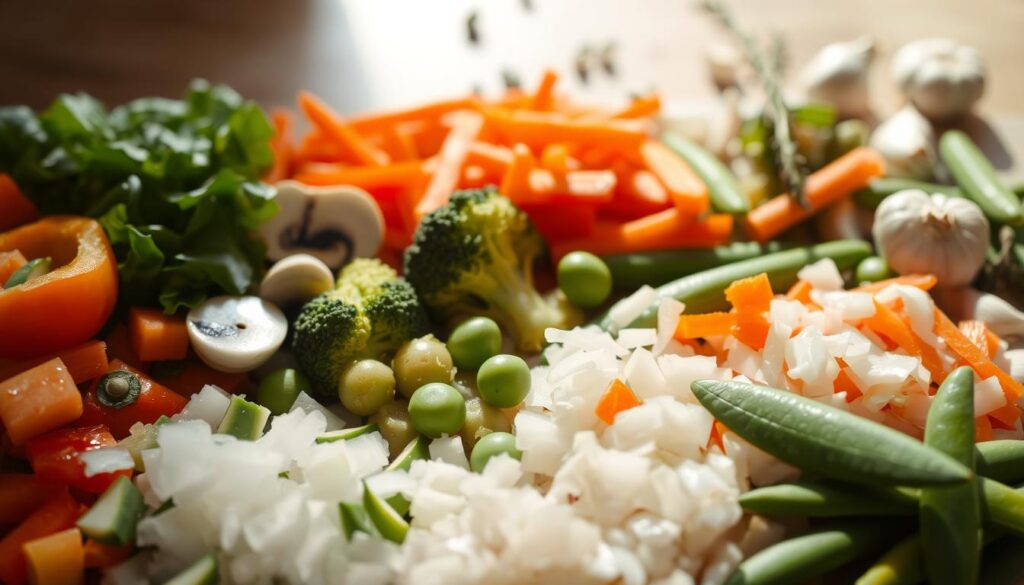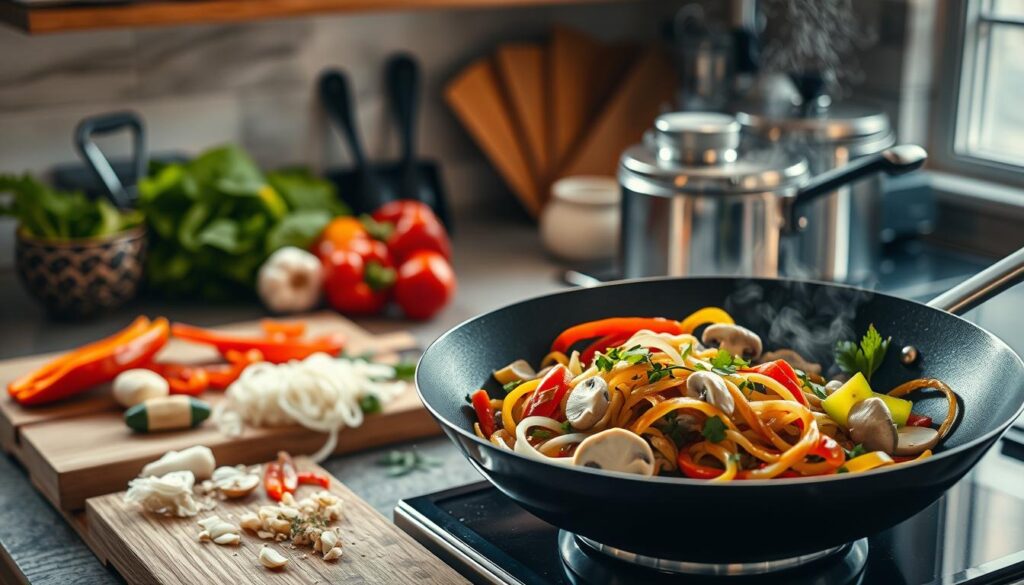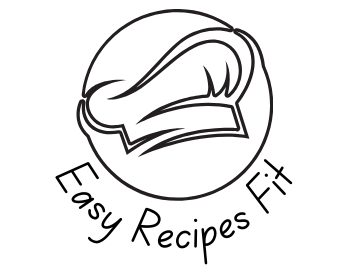Imagine finding a noodle that changes how you eat without losing flavor. Shirataki noodles, a hidden gem in low-carb food, offer a new way to enjoy pasta. They help you reach your health goals.
Konjac noodles with veggies are a game-changer for those who care about their health. These noodles, from Southeast Asia, mix nutrition with great taste. They’re a tasty alternative to regular pasta.
If you’re watching your weight, on a keto diet, or just want to eat healthier, shirataki noodles are a great choice. They offer a low-calorie, satisfying meal option.
Key Takeaways
- Discover a zero-carb noodle alternative with incredible health benefits
- Enjoy meals that support weight management and digestive health
- Explore versatile konjac noodles with endless recipe possibilities
- Learn how to prepare delicious low-calorie dishes in minutes
- Embrace a gluten-free pasta substitute that doesn’t compromise on taste
Understanding Konjac Noodles: A Healthy Pasta Alternative
Discover a game-changing pasta alternative that transforms your meals while supporting your health goals. Konjac noodles, often called shirataki noodles, are revolutionizing how people approach vegan noodles and gluten-free noodles with their unique nutritional profile.
What Makes Konjac Noodles Special
These noodles come from the konjac plant’s root. They are special because of their glucomannan fiber. This fiber gives them amazing health benefits:
- Virtually calorie-free (less than 10 calories per serving)
- Contains less than 1 gram of carbohydrates per cup
- Provides 6 grams of dietary fiber per serving
Nutritional Benefits of Shirataki Noodles
Konjac noodles offer impressive nutritional benefits. The glucomannan fiber acts like a digestive superhero. It helps with:
- Weight management support
- Blood sugar level stabilization
- Cholesterol reduction
Why Choose Konjac Over Regular Pasta
Konjac noodles are different from regular pasta. They meet the needs of those looking for vegan, gluten-free, or keto-friendly options. Their ability to absorb water and low calorie count make them great for health-conscious people.
Pro tip: Always drink plenty of water when consuming konjac noodles to support proper digestion and maximize their health benefits.
Essential Ingredients for Your Konjac Noodles with Veggies
Making a tasty and healthy noodle dish begins with picking the right ingredients. Your vegetable stir-fry will shine with a mix of fresh produce and flavorings. These turn konjac noodles into a nutritious meal.
To make a real and lively healthy noodle dish, you need these key ingredients:
- Konjac noodles (shirataki)
- Fresh vegetables for stir-fry:
- Broccoli florets
- Bell peppers
- Carrots
- Zucchini
- Aromatics:
- Minced garlic
- Fresh ginger
- Sauce ingredients
Every ingredient is important for flavor and nutrition. Konjac noodles are low in calories. Fresh veggies add vitamins and minerals.
| Ingredient | Nutritional Benefit | Flavor Profile |
|---|---|---|
| Konjac Noodles | Zero net carbs | Neutral, absorbs other flavors |
| Broccoli | High in vitamin C | Slightly bitter, crunchy |
| Bell Peppers | Rich in antioxidants | Sweet, vibrant |
| Carrots | Beta-carotene source | Sweet, earthy |
Choose fresh, colorful produce for your vegetable stir-fry. Organic veggies boost nutrition and taste. Aim for a dish that’s both tasty and healthy.
Proper Preparation of Shirataki Noodles
Getting shirataki noodles right is key to a tasty low-carb dish. These Japanese noodles need special care for the best taste and texture.
Rinsing and Draining Techniques
Proper rinsing is essential for enjoying shirataki noodles. They come in liquid that can smell strong. To get rid of this:
- Drain the package completely
- Rinse under cold water for 2-3 minutes
- Pat dry with paper towels
Pre-cooking Methods for Best Texture
Try these methods to enhance the texture of shirataki noodles:
- Dry-frying: Heat a non-stick pan and cook noodles without oil for 5-7 minutes
- Boil for 2-3 minutes to remove excess moisture
- Use a clean kitchen towel to remove additional water
Avoiding Common Preparation Mistakes
Avoid these mistakes to avoid disappointing results:
- Never skip thorough rinsing
- Ensure complete moisture removal
- Use high heat when pre-cooking
- Season immediately after preparation
Pro tip: Treat shirataki noodles like a blank canvas ready to absorb your favorite flavors!
Selecting and Preparing Fresh Vegetables

Starting a delicious vegetable stir-fry means picking the right fresh produce. Your dish will burst with life from vibrant, crisp veggies. These not only taste amazing but also pack essential nutrients.
For a colorful and nutritious stir-fry, choose a variety of vegetables. The perfect mix should include:
- Broccoli florets for crunch and vitamins
- Bell peppers in red, yellow, or green for sweetness
- Carrots for natural sweetness and texture
- Zucchini for a tender element
- Mushrooms for an umami flavor profile
It’s important to cut your veggies right for a great stir-fry. Slice them into uniform, bite-sized pieces for even cooking. Cutting them the same size ensures they cook evenly and looks good too.
Prepping your veggies ahead of time can save you time on busy nights. Wash, chop, and store them in airtight containers in the fridge. This prep work makes your healthy noodle dish quick and easy to make.
Pro tip: Choose seasonal vegetables for the freshest flavors and most affordable prices!
Creating the Perfect Stir-Fry Sauce
Making a great stir-fry sauce is key to turning your healthy noodle dish into a true masterpiece. The right sauce can make simple ingredients taste like they’re from a restaurant. It will make your meal exciting and delicious.
Basic Sauce Components
Your stir-fry sauce starts with a mix of important ingredients:
- 3 tablespoons of low-sodium soy sauce
- 1 tablespoon of rice vinegar
- 1 tablespoon of sesame oil
- Optional sweetener: monk fruit or stevia
Customizing Your Sauce Flavors
Make your sauce your own by adjusting it to your liking. For a creamy twist, add a tablespoon of peanut butter. Try different flavors like teriyaki or spicy chili to keep things interesting.
“The magic of a great stir-fry is in the sauce – it’s where flavor comes to life!” – Culinary Chef
Storage and Make-Ahead Tips
Make your sauce ahead of time to save time. Store it in an airtight container in the fridge for up to 5 days. Remember, whisk the ingredients before cooking for the best flavor.
- Refrigerate in glass jar
- Label with preparation date
- Shake well before using
Step-by-Step Cooking Instructions

Making a tasty vegetable stir-fry with konjac noodles is simple. It only takes about 25 minutes. This makes it a quick and healthy meal for those with busy schedules.
Begin by getting your ingredients ready for the konjac noodles with veggies. Rinse and dry the shirataki noodles well. This removes extra moisture and improves the dish’s texture.
- Heat a large skillet or wok over medium-high heat
- Add a tablespoon of cooking oil
- Toss in your favorite chopped vegetables
- Stir-fry vegetables for 5-7 minutes until crisp-tender
- Add pre-drained konjac noodles
- Pour in your prepared stir-fry sauce
- Toss everything together for 2-3 minutes
To get the best results, keep the heat high and stir ingredients fast. This keeps your veggies crisp and lets the noodles soak up the sauce.
Pro tip: Adding protein like shredded chicken, tofu, or shrimp can make your dish even better. It turns your konjac noodles with veggies into a full, balanced meal.
Your dish will be full of nutrients, with about 185 calories per serving. It has 10g of protein and just 14g of carbs. Enjoy your healthy and tasty meal!
Health Benefits and Dietary Considerations
Konjac noodles are a nutritious meal option that can change how you eat. They are low in carbs and offer great health benefits for those looking for a smart diet.
Konjac noodles are a great choice for those on a keto diet. Their unique properties make them a great fit for many diets.
Weight Management Advantages
Konjac noodles can help with weight management. They have a lot of glucomannan fiber, which helps you feel full longer.
- Extremely low in calories
- Promotes satiety
- Supports natural weight loss processes
Blood Sugar Control Benefits
These noodles are good for blood sugar control. Studies show that glucomannan can help keep blood sugar levels stable.
- Helps stabilize insulin response
- Reduces rapid blood sugar fluctuations
- Supports metabolic health
Digestive Health Improvements
Konjac noodles are good for your gut. They have prebiotic properties that help your gut bacteria, improving digestion.
- Enhances gut microbiome diversity
- Supports regular digestive function
- Reduces inflammation in the digestive tract
Always introduce konjac noodles gradually and consume adequate water to maximize health benefits and minimize potential digestive adjustments.
Meal Prep and Storage Guidelines
Preparing a meal ahead of time can simplify your cooking routine. Konjac noodles are great for meal prep because they keep their texture well. This makes them perfect for a healthy noodle dish.
Here are some important tips for storing your konjac noodle meal:
- Rinse and drain konjac noodles well before storing
- Store cooked noodles and veggies separately to keep them fresh
- Use airtight containers for your meals
- Refrigerate your meal right after cooking
For the best taste, eat your meal within 3-4 days. When you reheat, use a skillet or microwave to avoid sogginess. Pro tip: Add a splash of water or broth to help restore moisture during reheating.
Meal prep can save you time and ensure you have tasty, healthy meals. By preparing parts in advance and storing them right, you’ll enjoy nutritious meals all week.
Creative Recipe Variations and Add-ins
Konjac noodles are a blank canvas for your culinary creativity. They’re great for making tasty dishes that everyone can enjoy. These vegan noodles fit well with many diets and tastes.
With konjac noodles, you can explore different cuisines. They become a versatile ingredient for various meals. Here are some ideas to get you started:
- Thai-Inspired Pad Thai with crispy tofu
- Japanese-Style Ramen with soft-boiled eggs
- Mediterranean Noodle Salad with roasted vegetables
- Spicy Korean Stir-Fry with chicken or shrimp
Adding protein can make your konjac noodle dishes even better. Try these options:
- Grilled chicken strips
- Baked tofu cubes
- Seared shrimp
- Scrambled eggs
Don’t be afraid to try new sauces and seasonings. Peanut sauce, teriyaki, or spicy chili oil can turn a simple dish into a gourmet meal.
| Cuisine Style | Protein Option | Sauce Recommendation |
|---|---|---|
| Thai | Tofu | Peanut Sauce |
| Japanese | Chicken | Teriyaki |
| Korean | Shrimp | Gochujang |
These ideas will keep your konjac noodle meals fresh and exciting. They’re healthy and tailored to your taste.
Conclusion
Your journey into konjac noodles with veggies is a big step towards a healthier diet. These noodles are low in calories and carbs, making them perfect for those watching their diet. They’re a great choice for anyone looking for a nutritious meal.
By trying these low-calorie noodles, you’ve found a versatile ingredient that helps with many health goals. They’re great for weight management, blood sugar control, and as a healthy pasta substitute. Their ability to soak up flavors and offer nutritional benefits is unmatched.
This approach to cooking is easy and flexible. You can quickly add these noodles to your meals and make them your own. Start changing your eating habits, try new veggie mixes, and enjoy meals that are good for you.
Don’t stop exploring konjac noodles. Keep trying new recipes, share them with friends, and find more ways to use them. They can really improve your diet.
FAQ
What exactly are konjac noodles?
Konjac noodles, also known as shirataki noodles, are made from the konjac yam. They are low in carbs and gluten-free. This makes them great for keto, vegan, or low-carb diets.
Are konjac noodles healthy?
Yes, they are very healthy. Konjac noodles have few calories and lots of fiber. They help with weight, digestion, and blood sugar.
How do I prepare shirataki noodles to remove the unusual smell?
Rinse the noodles under cold water for a few minutes. Then, dry-fry them in a non-stick pan for 2-3 minutes. This removes moisture and smell, improving taste and texture.
Can I use konjac noodles in different types of cuisines?
Absolutely! They are versatile and can be used in many cuisines. Try them in Asian stir-fries, Italian pasta, cold salads, or soups.
Are konjac noodles suitable for special diets?
Yes, they fit many diets. They are vegan, gluten-free, keto-friendly, and low-carb. They’re good for weight management and diabetes. Always check with a healthcare professional.
How long can I store prepared konjac noodle dishes?
Store them in an airtight container in the fridge for 3-4 days. Keep the sauce separate and add it when reheating. Reheat gently to keep the noodles’ texture.
What vegetables work best with konjac noodles?
Use crisp, colorful veggies like bell peppers, broccoli, and carrots. They add nutrition, flavor, and texture to your dish.
Can I add protein to my konjac noodle dish?
Definitely! Add tofu, chicken, shrimp, tempeh, or eggs. This makes the dish more filling and balances nutrition while keeping it low-carb.

